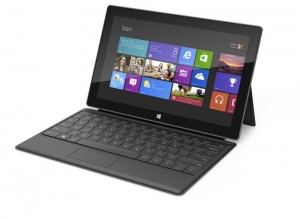 When Microsoft launched its Surface with Windows RT last fall, we were all pretty excited here in the Windows IT Pro offices. It was nice to see the company we write about come up with a tablet that would compete with the Apple iPad while offering an intriguing new Windows experience. But, to date, no one in the building has actually purchased one. That seemed strange at first, but the reason is pretty clear: We were all waiting for the more powerful Surface Pro.
When Microsoft launched its Surface with Windows RT last fall, we were all pretty excited here in the Windows IT Pro offices. It was nice to see the company we write about come up with a tablet that would compete with the Apple iPad while offering an intriguing new Windows experience. But, to date, no one in the building has actually purchased one. That seemed strange at first, but the reason is pretty clear: We were all waiting for the more powerful Surface Pro.
Due February 9 (and just now debuting in floor models at Microsoft stores), the Surface Pro—officially, the Surface Windows 8 Pro—is in many ways the culmination of what the “Surface” promised when it launched. Powered by an Intel Core i5 chip, the Surface Pro combines the capabilities of a laptop with the convenience of a tablet device. It will run all Windows 8 applications as well as current Windows 7 desktop applications. It’s the best of two worlds, from the perspective of a power user, and many people have been eagerly awaiting its debut. We knew it was coming three months after the Surface RT launch in October 2012, so when January 2013 rolled around, Twitter went insane with impatient consumers.
Slowly, information about the forthcoming Surface Pro began to, ahem, surface. We heard rumors in international markets that it would be priced fairly high—and indeed, official pricing later revealed that it would start at $899 for the 64GB model, and go up to $999 for the 128GB model. Consumer reaction ranged from disappointment to acceptance to mocking anger. You can always count on knee-jerk reactions across social media, but the consensus among the more sane among us was that, given the capabilities of the Surface Pro, pricing seemed right in line with—and even seemed to undercut—the competition. But add on the necessity of a Touch or Type Cover (at over $100), and there’s no denying that the Surface Pro is a pricey piece of hardware.
So, a hefty price tag was something potential Surface Pro buyers anticipated.





